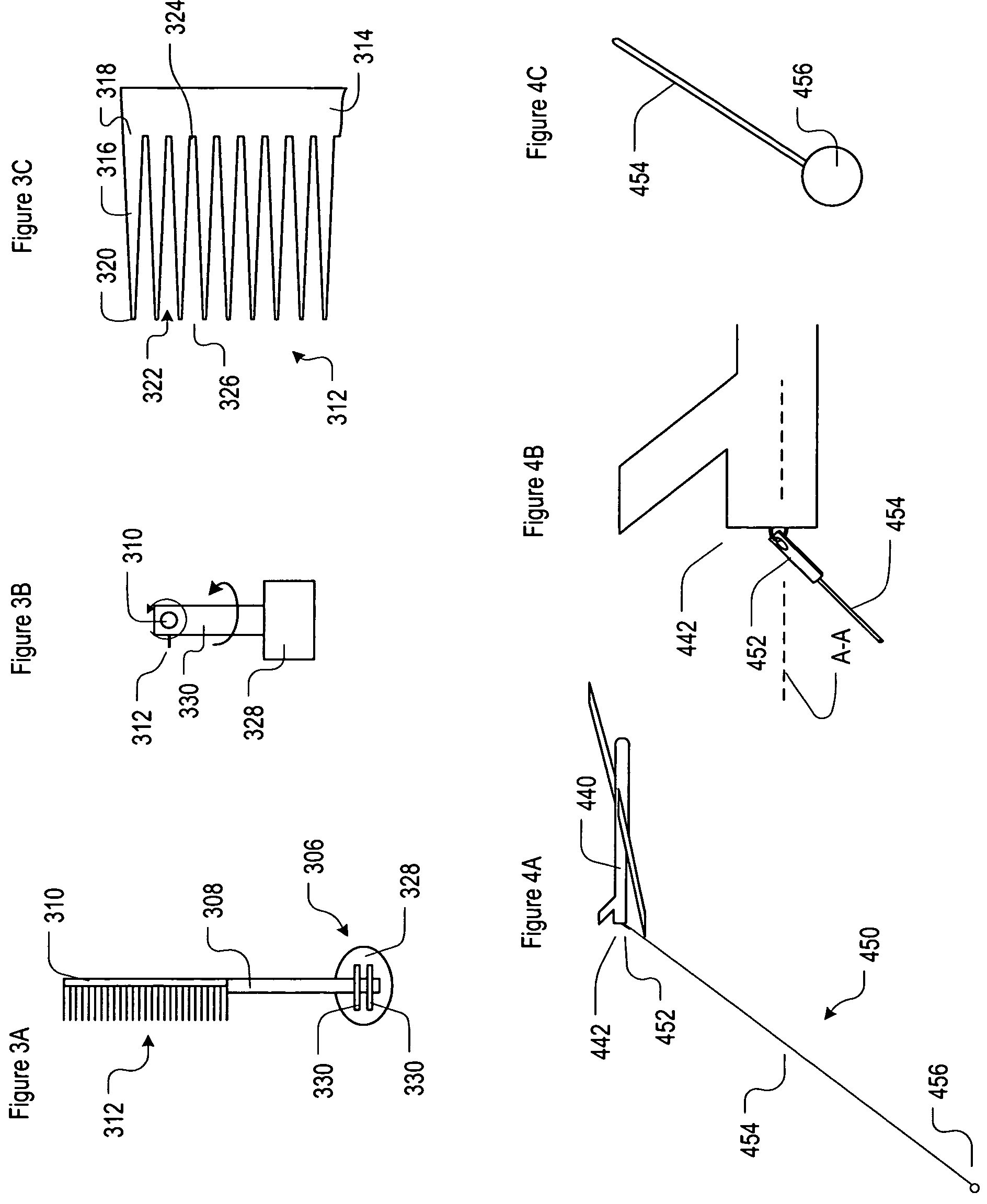UAV recovery system II
a technology for uavs and recovery systems, applied in the field of systems for retrieving unmanned aerial vehicles, can solve the problems of difficult to safely land a uav on the deck of a ship, difficult to recover a uav on the ship deck, and rarely attempted deck landings, and achieve the effect of positive capture of the uav
- Summary
- Abstract
- Description
- Claims
- Application Information
AI Technical Summary
Benefits of technology
Problems solved by technology
Method used
Image
Examples
Embodiment Construction
[0025]FIGS. 1 and 2 depict, via respective bow and top views, ship 100. Coupled to deck 102 of the ship are ship-based elements 104 of a UAV recovery system in accordance with the illustrative embodiment of the present invention.
[0026]FIGS. 3A through 3C depict further detail of ship-based elements 104 of the UAV recovery system. Referring now to FIGS. 3A, ship-based elements 104 include support structure 306, movable boom 308, and capture plate 312, which are mechanically interrelated as shown. In the embodiment depicted in FIGS. 3A and 3B, support structure 306 comprises base 328 and upright member(s) 330. In some embodiments, support structure 306 is disposed on an ISO module (not depicted).
[0027]Support structure 306 supports boom 308. As depicted by the arrows in FIG. 3B, the boom is supported in such a way that it has two degrees of freedom. In particular, boom 308 is capable of being rotated about its horizontal long axis (the long axis is directed “into the page” in FIG. 3B)...
PUM
 Login to View More
Login to View More Abstract
Description
Claims
Application Information
 Login to View More
Login to View More - R&D
- Intellectual Property
- Life Sciences
- Materials
- Tech Scout
- Unparalleled Data Quality
- Higher Quality Content
- 60% Fewer Hallucinations
Browse by: Latest US Patents, China's latest patents, Technical Efficacy Thesaurus, Application Domain, Technology Topic, Popular Technical Reports.
© 2025 PatSnap. All rights reserved.Legal|Privacy policy|Modern Slavery Act Transparency Statement|Sitemap|About US| Contact US: help@patsnap.com



